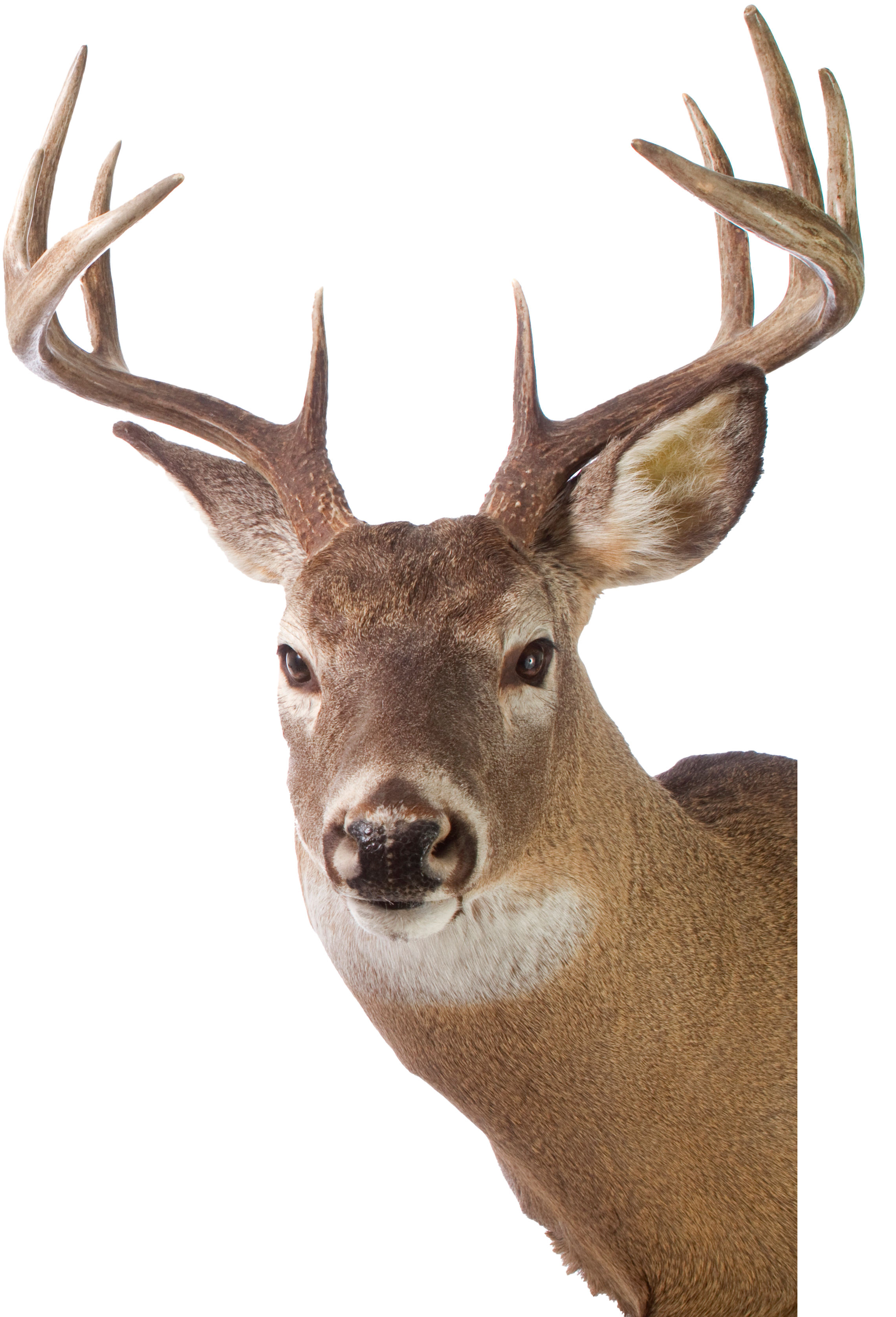
The Kaspershäusle was built in 1716 by Kasper Fehrenbach. Kasper Fehrenbach was the 6th son of the royal court farmer Hans Fehrenbach. The Königenhof in Wagnerstal was destroyed by an avalanche on February 24, 1844. 17 people died in this accident. Hans Fehrenbach ran the active, private settlement of the Wagner Valley. Seven of his children alone have settled in Wagnerstal, including “Casper Ferenbach”. Kasper Fehrenbach, born September 20, 1671, died September 25, 1735, married Margarete Hug, bailiff's daughter of Wildgutach, on October 18, 1702. In 1707 he founded the Kaspel-Gütle, named after him, by clearing "im Knöbelwald" on the Bannscheide to Wagnerstal, where he built his house in 1716. The carpenter has carved the following text into the bow on the west side: " CASPER FERENBACH HAS BUILT THE HOUSE MARCTCRET HIDEMARI HERMAN SPANMAISTER 1716".
The Königenhof in the rear of the Wagner Valley, an hour and a half from Neukirch, stood on the winter side in front of a steep mountain wall. The farmhouse with barn and stable was very large, built entirely of wood and quite old. The entrance and barn were on the side of the Steinberg, the highest mountain in what was then the Triberg district. 32 steps up the valley was the two-part house of the clock frame maker Philipp Beha and the roofer Johann Löffler and just as far away on the opposite side of the valley stream was the house of the widow Blasius Faller. The following description is essentially based on the minutes of the Triberg district office. At that time, the Martin Tritschler family lived in the courtyard building with eleven of the twelve children and mother-in-law, and in the rear part of the building lived the housekeeper Hilar Winterhalter with his wife and four children and his sister-in-law with one child, a total of 22 people. The king's builder Martin Tritschler had only small debts. In February, 1844, the snow on the steep, clear-cut slope was, according to knowledgeable people, from 6 to 14 feet deep, depending on how the wind had blown it. On Saturday, February 24, 1844, there was a sudden change in the weather; it rained all day long with heavy snow. At 6 o'clock in the evening a "snow switch" behind the house (west side) tore away the immensity. The “women” therefore expressed concern about the house, but the men said that the snow could not harm the large building.
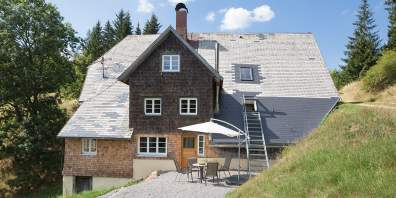
In the Kaspershäusle there is also a wonderfully completely renovated holiday apartment equipped with every comfort. Here you can switch off from everyday life in the great outdoors in the middle of the forest. Really in the middle of the forest.
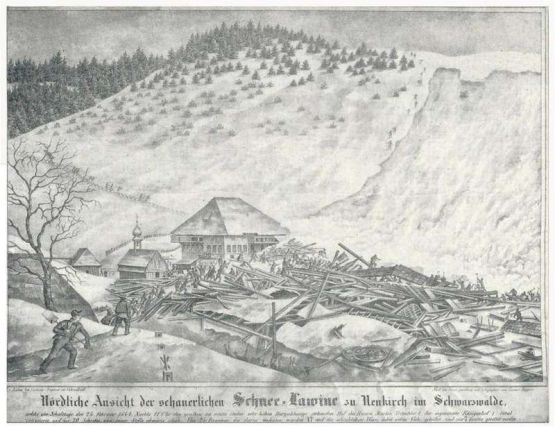
In the court chronicle of the municipality of Neukirch, the avalanche accident and the destruction of the Königenhof were described as follows:
"The Fall of the Royal Court"
Source: "From the history of Neukirch, farm chronicle of a Black Forest community" Published by the community of Neukirch, 1968.
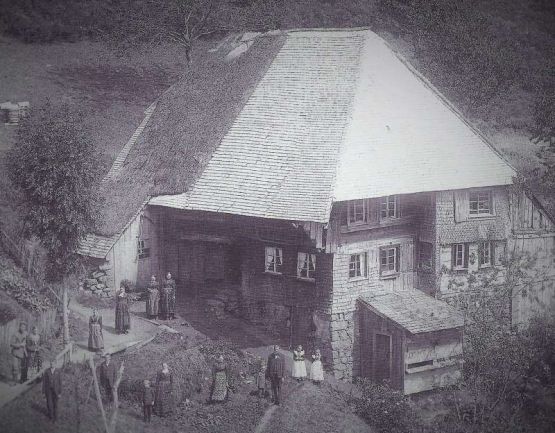
In the neighboring house, the two sons Blasius and Philipp Beha worked until around 9 o'clock in the evening and then came into the farm building to play cards with the farmer, his sons Lorenz and Thomas and the houseman Hilari from Kurzweil, as often happened. At the same time the other residents of the house went to rest.
As the surviving daughters later testified, they were woken up at night, around 11 a.m., by a terrible crash. A wide snow avalanche from the mountain side had pushed the entire building off its foundation, carried it 16 steps down the valley and thrown the west side of the roof over the house, so that the entire building was compressed. The room in which the sisters Bibiane and Martha slept fell into the stable over the cattle, where the girls could only lie or sit hunched over in a hollow space and could not find a way out.
Sisters Elisabeth and Theres, who were sleeping in another room, were also buried by floorboards and boards so that they could no longer move. In the house next door, Philipp Beha's wife heard "a noise" around 11 a.m., like a strong gust of wind, and felt her house shaking. But she didn't dwell on it because it was a very stormy night. She got up at 4 a.m. to cook breakfast because the two sons were supposed to carry watch frames to Urach. When the couple couldn't find their sons, they looked out the window, but no longer saw any window from the royal court and thought that the snow had piled up so much that even the windows on the second floor could no longer be seen. Philipp Beha ran over to the yard, but instead of the house he only saw a pile of snow, so he woke up his housemate, Johann Löffler. The married couple Beha and Johann Löffler went back to the royal court with lights and lanterns, and when they called out whether anyone was still alive, the daughters replied: “The four of us are still alive.” They asked that they be plucked out because they were nowhere knew beyond.
While Johann Löffler went for help at Kajetanshof, a quarter of an hour away, Bibiane worked her way through the snow and wood at the call of Mrs. Beha and found a way out towards the entrance or against the mountain. Her siblings, who slept in the same room with her, were rescued after the first helpers arrived at the scene of the accident.
In Philipp Beha's house, those who were rescued were provided with clothes. The Kajetan farmer's servant had informed Mayor Auber of the accident at half past six. The mayor informed the priest. Little by little more and more people came.
But the rescue efforts were made more difficult not only by the high pile of rubble, with the timbers lying all over the place, but also by a cold snap that caused the wet masses of snow to solidify into an iceberg. In addition to the carts, the farmhouse contained 300 to 400 tons of hay, a lot of straw and all kinds of fruit. Recovering the dead took several days.
Victims of the avalanche accident:
1. Farmer Martin Tritschler, 60 years old
2. his wife, Wallburga née Heitzmann, 50 years old
3. their mother Maria Faller von Urach, 70 years old
4. Lorenz Tritschler, 23 years old
5. Fidel Tritschler, 14 years old
6. Maria Tritschler, 19 years old
7. Magdalena Tritschler, 13 years old
8. the househusband Hilar Winterhalter, 30 years old
9. his wife Klara née Hofmeier, 28 years old
10. their children Wilhelmine, 5 years old, and
11. Balbina, 3 years
12. Salomon Hofmeier, one year old, all laid out on boards in the large court chapel
13. Philipp Beha, 20 years old, who kept calling for a long time, was only rescued alive on Sunday afternoon at 3 o'clock, but died half an hour later, laid out in his parents' house,
14. Theresia Tritschler, 15 years old, died from her serious injuries on February 27th on the Jägerstieg, where she had been taken to relatives the day before.
15. Katharina Hofmeier, mother of 12), sister of 9), 21 years old, on February 27th, 7 o'clock in the evening, recovered dead from the rubble,
16. Blasius Beha, 23 years old, found dead in the room on the evening of February 28th,
17. Thomas Tritschler, 18 years old, found dead from his room on the evening of February 29th.
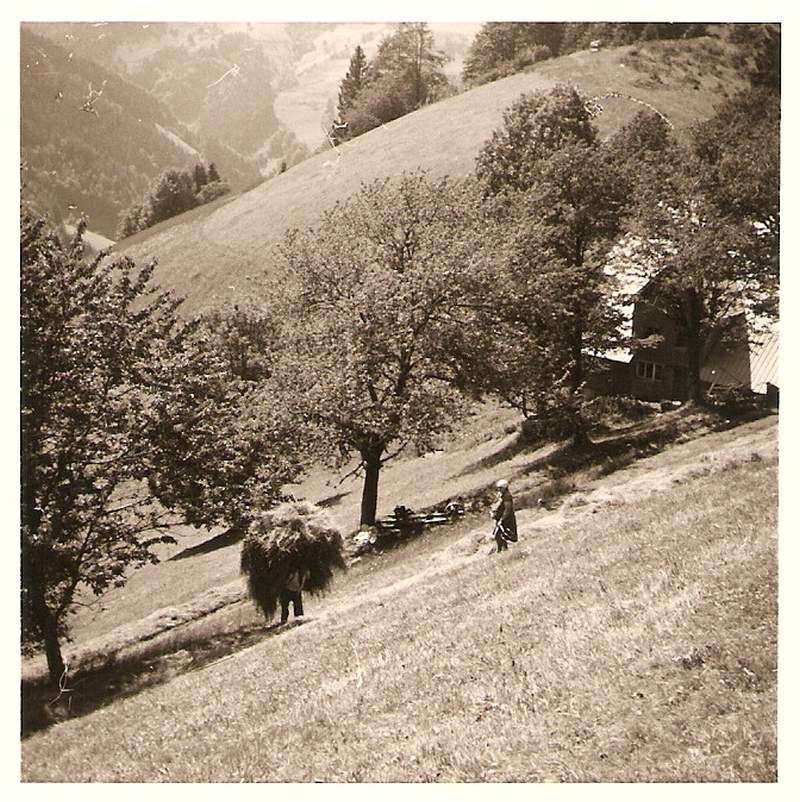
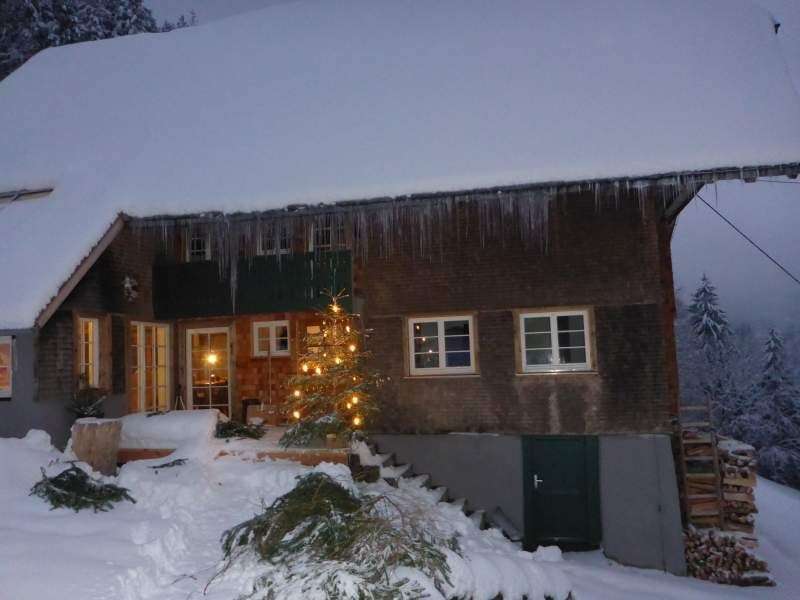
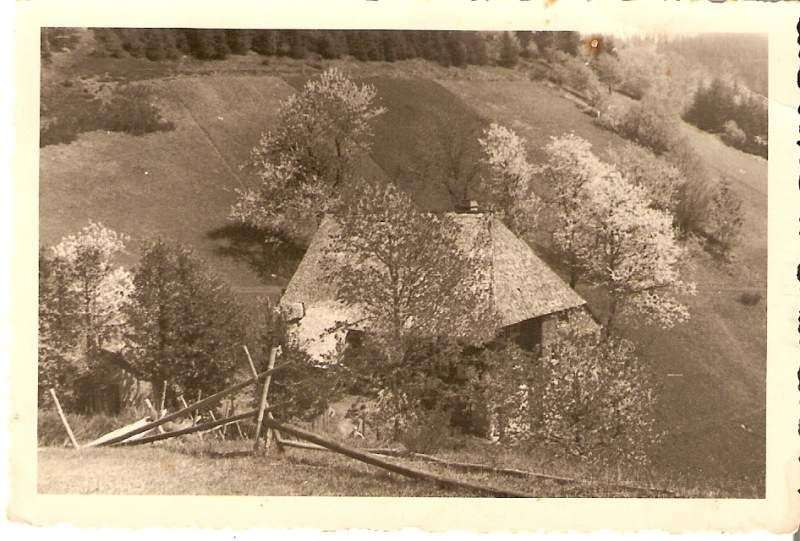
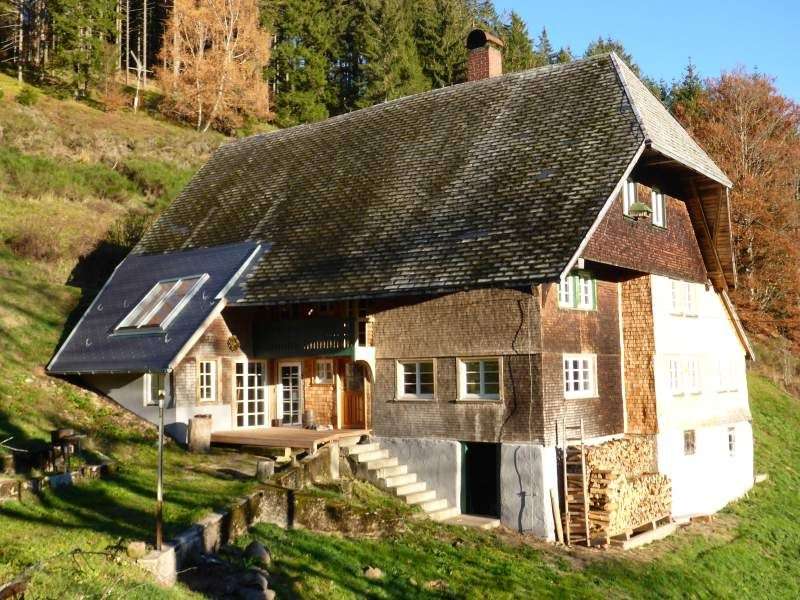
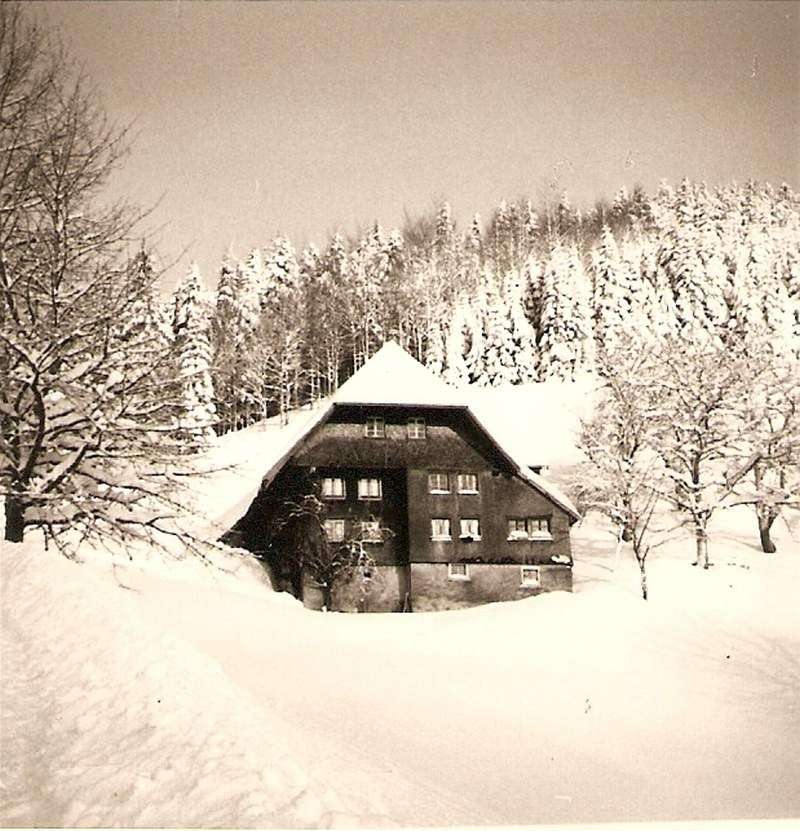
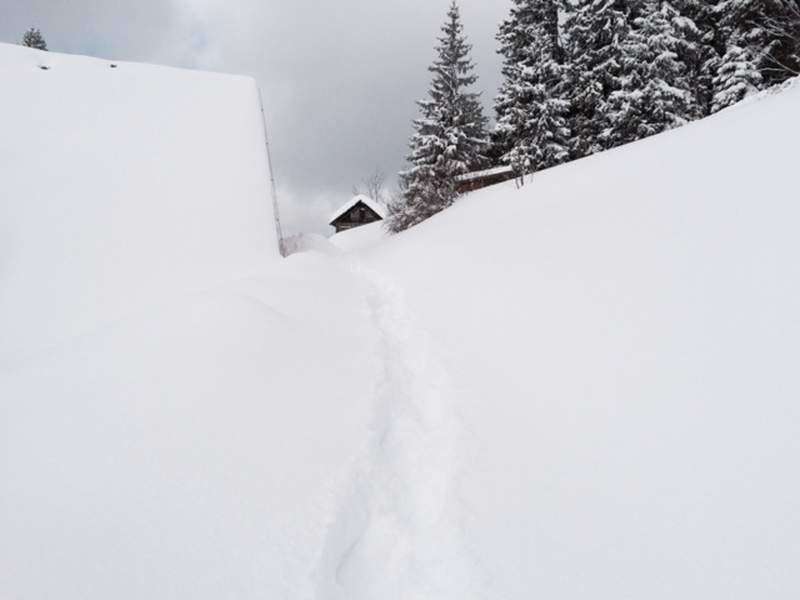
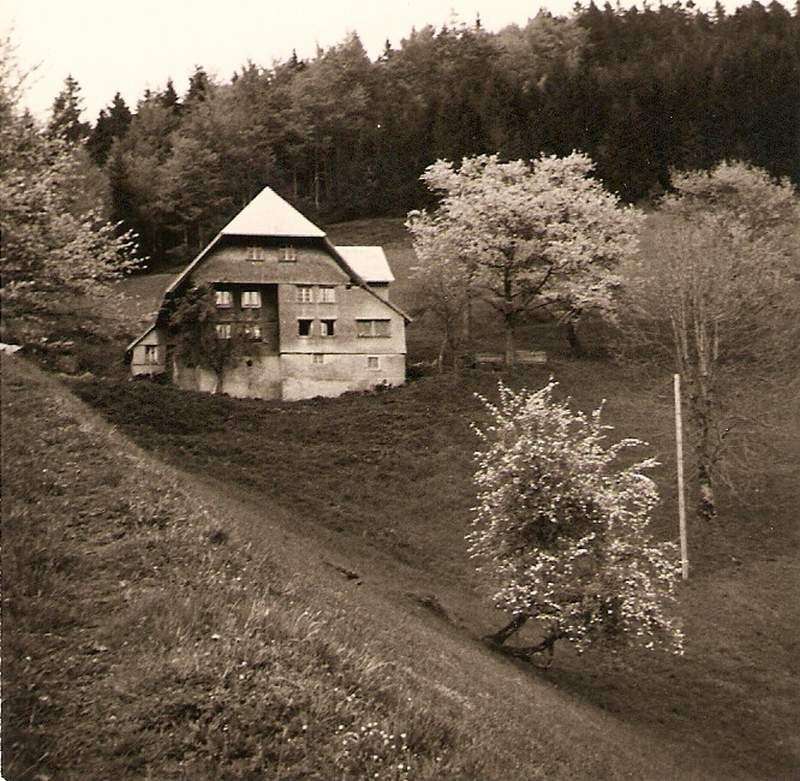
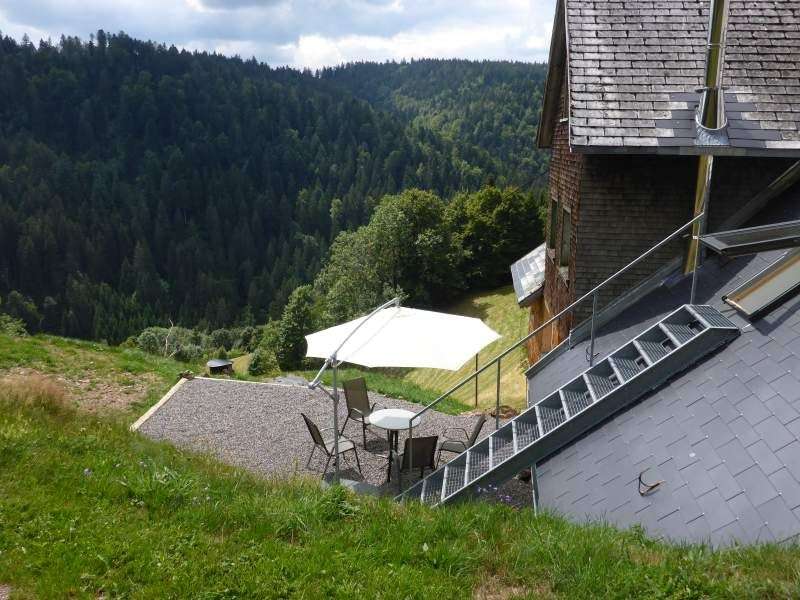
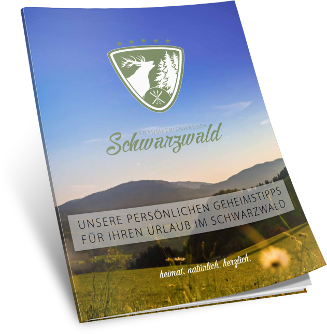
Get inspiration for your family vacation with children on our website. Find out about our holiday apartments and holiday homes for your holidays with children. When you register for the newsletter, you will receive our 30-page e-book with our personal insider tips for your family leisure time by email.
By submitting this form, you agree that we will send you advertising and information material about our services by email. You can object to the use of your email address free of charge at any time using the unsubscribe link contained in our emails or by sending a message to info@schwarzwald-ferienhaus.net. Further information can be found in our privacy policy .
The dead from the royal court were transported to the cemetery in 16 sleighs and laid to rest in a common grave. Of the 24 people in the house, only seven survived the accident: the daughters Elisabeth, 22 years old, Bibiane, 21 years old, Martha, 16 years old, the ten-year-old twin brothers Leo and Julius and Paul and Anton Winterhalter, 9 and 6 years old. There were 28 cattle and 2 horses on the farm. The cattle were mostly still alive when they were pulled out, but then had to be slaughtered on the spot by five butchers.
This may have reinforced the impression of horror. 1 horse, 2 young bulls, 1 calf, 2 calves, 4 sheep and 4 goats were rescued. The farmhouse was included in the building insurance for 3,150 florins, but it could hardly have been rebuilt for twice that amount.
The accident would not have occurred if the steep mountain wall above the house had still been covered in wood. To avoid similar misfortunes, it was recommended that the new house be built on the summer side.
The Wagnerstal catastrophe was widely echoed. Church collections were held in the offices of Triberg, Villingen and Neustadt. In Donaueschingen, the court orchestra organized a charity concert for the benefit of the orphans. On March 8, 1844, the Grand Duke granted support of 500 florins from his treasury for the affected families, and the Prince of Fürstenberg also donated 500 florins. The Oberwolfloch farmer Andreas Bäuerle, who also suffered snow pressure damage, decided not to do so out of a “noble, philanthropic spirit.” on a donation share. Two months after the accident, Pastor Schilling wrote: “Tritschler’s older children are wandering around homeless.”
On July 21, 1844, the local council and foundation board decided to create a memorial in the cemetery for those who died in an accident, which still commemorates the victims of the avalanche disaster today. The cost of 150 fl. was paid from the collection money donated from all over the country.
The carers of Martin Tritschler's heirs - Georg Heintzmann from Bad Urach and Rößlewirt Anton Rombach - sold on July 15, 1844 to Paul Löffler, Kajetanshof:
1. The chapel built of wood with a fruit store built on it.
2. The small farm mill located below this chapel,
3. The wood from the collapsed farmhouse,
4. The following areas: 11.6 acres of arable fields, 14.6 acres of meadows, 132.5 acres of pasture fields, 53.3 acres of forest in the rear Wagner Valley, for 8830fl.
According to the purchase letter from 1798, Johann Löffler owns half a house on the farm. Georg Hermann has a right to wood and Philipp Beha, according to the purchase letter from 1805, has a right to graze. Cajetan builder Paul Löffler wanted to rebuild the Königenhof.
The timber was already ready, but Paul Löffler's early death thwarted the construction project. The Königenhof avalanche disaster affected people for a long time. In 1908, the forestry authority had a memorial plaque installed at the former farm site."
Heiko Roth
Schillerstraße 62
72275 Alpirsbach
Telephone: +49 7444 4130
Email: anfrage@schwarzwald-ferienhaus.net
